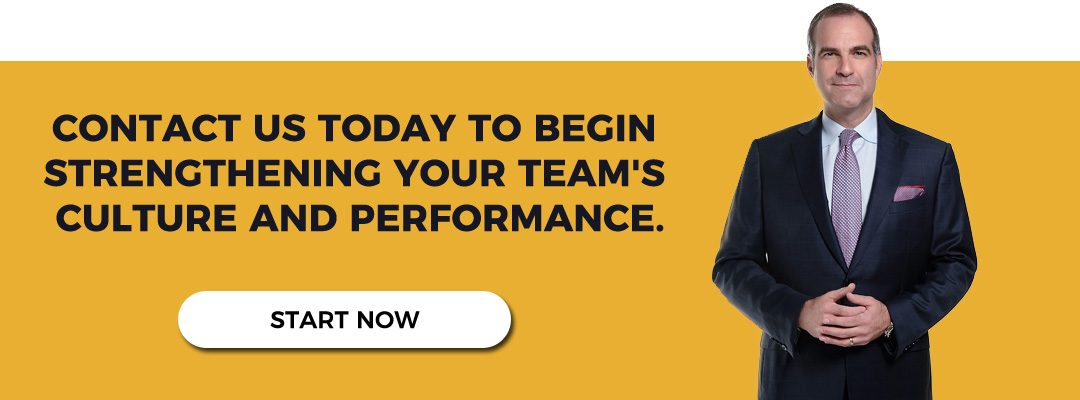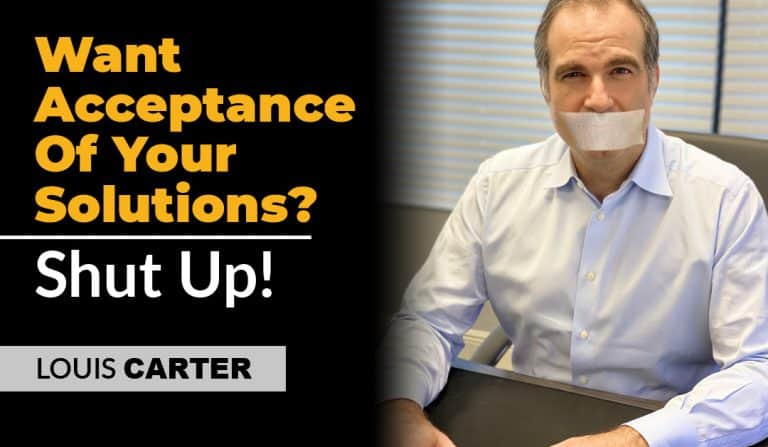Leading with workplace empathy principles and building trust at work form the backbone of mental well-being strategies for effective leaders. This is why executives must prioritize emotional safety and genuine care to build a resilient workforce.
Empathy in the workplace culture essentially promotes understanding and supports relationships. McKinsey research shows that empathy drives collaboration, creativity, and respect, particularly among younger generations who expect compassionate leadership.
When leaders listen empathetically, they allow staff to express concerns and feel valued. That trust at work builds emotional connection. As a result, employees feel safe bringing their whole selves and putting in more effort. That environment nurtures employee mental well-being, and it promotes both loyalty and sustained performance under stress.
Trust in the workplace reduces psychological risks and strengthens employee well-being, according to Harvard Business Review. Research on Psychosocial Safety Climate at the University of Catania shows that improving safety cuts sickness absence by up to 43% and lowers burnout rates.
It is mostly the atmosphere of mutual respect and open dialogue that leads to trust. That trust at work forms a space where emotional challenges do not spiral into crisis. Leaders who help create and promote this climate support employee mental well-being directly.
Empathy in workplace leadership helps counter toxic positivity and superficial gestures, which can undermine genuine emotional connection. Experts warn that forced positivity can erode trust when leaders ignore real emotions.
Leaders must acknowledge difficulties honestly and offer real support. That authenticity builds credibility. When staff see that their emotional state matters, trust at work deepens. That trust and empathy combine to strengthen employee mental well-being and reduce emotional fatigue.
Why Empathy at Work Matters for Mental Health and Performance
Empathy in workplace culture offers more than kindness. EY research finds that empathy between leaders and employees is linked to higher efficiency, job satisfaction, and idea sharing. When empathy flows both ways, staff feel respected and energized.
This very trust in the workplace helps teams collaborate effectively. Employees feel aligned with each other, with the company, and with customers, promoting a sense of mental support. This dynamic boosts employee mental well-being and leads to sustained creativity and retention.
Burnout, on the other hand, undermines mental well-being and retention. Studies published in JAMA Network Open and similar journals show that empathy reduces burnout by improving job satisfaction and emotional resilience. In healthcare settings, staff with higher empathy reported lower exhaustion and stronger engagement.
For broader work environments, on the other hand, leaders who model empathy in workplace behaviors support staff through demands and ambiguity. That influence builds trust at work that shields against mental collapse and turnover risk.
Organizations pay a measurable cost when empathy and trust decline, through turnover, stress-related leave, and reduced productivity. A 2025 Businessolver State of Workplace Empathy report found that organizations perceived as unempathetic have three times higher reported toxicity and 47% higher incidence of mental health challenges. That creates churn, stress, and absences. Leaders who embrace empathy in the workplace value and build trust at work, reducing those risks. They sustain employee mental well-being and protect performance.
Psychological studies distinguish empathy types. Affective empathy may cause fatigue, while cognitive empathy supports social support and resilience. Leaders who rely on cognitive empathy understand others without absorbing distress. That balanced approach encourages compassion without burnout.
That builds sustainable empathy in workplace culture. Trust grows when leaders provide meaningful support without overwhelming team members emotionally. This balance fortifies employee mental well-being.
Become a Most Loved Workplace®
Get certified and join the ranks of the world’s most respected workplaces. Build a culture your team will love.
Get Certified Now
Building Empathy and Trust through Leadership Actions
Executives must purposefully model empathy in workplace behaviors. Leaders show empathy by listening actively, asking open questions, and sharing authentic concern. When staff see leaders noticing workloads or emotional stress, trust at work rises.
Deloitte and McKinsey recommend empathy training for managers to foster inclusion and strengthen psychological safety. Such training helps leaders respond to emotional needs much better and create a foundation that strengthens employee mental well-being while reducing hidden stress.
Leaders should encourage candid dialogue about mental health and workload. Harvard notes that when leaders normalize conversations about stress and burnout, staff feel safe to share. That openness builds trust at work, not to mention appreciation for the leaders.
When employees believe leaders take emotional health seriously, they engage more and report fewer absences. Empathy in workplace practices becomes embedded in culture, reinforcing mental well-being across teams.
Experts emphasize that genuine emotional connection is more effective than top-down change initiatives alone. There is no doubt that empathy-led workplace change succeeds when leaders relate on a human level. Trust at work grows when staff see leaders share vulnerability and listen deeply. This very human capital approach nurtures mental well-being and embeds emotional maturity in leadership. Organizations excel when empathy becomes part of their operating system.
Promoting Empathy and Trust Through Culture and Communication
Culture shapes empathy in the workplace and builds trust across teams. Deloitte’s Human Capital Trends report highlights empathy and curiosity as vital leadership traits for today’s blurred work boundaries. When leaders prioritize these traits, employees feel seen and heard.
As empathy becomes a cultural norm, mental well-being improves and stress declines. Staff feel better supported, reducing the risk of burnout.
Employees report feeling disconnected when empathy is treated as a marketing tactic rather than a lived cultural value. Time’s analysis of corporate empathy efforts shows staff grow skeptical when companies deploy empathy rhetoric without real change.
Leaders must align words with consistent, visible actions. When workplace empathy is demonstrated through real policies, such as flexible hours or thoughtful workload balance, it builds authentic trust. That trust supports employee mental well-being more than any poster campaign.
Trust at work becomes especially fragile when leadership misunderstands emotional signals. Deloitte found that many C-suite executives believe their organizations fully support well-being, while employees disagree.
That perception gap undermines belief in promises of workplace empathy. Leaders must listen deeply, gather real feedback, and act. When trust grows from evidence rather than claims, employees invest in engagement. Then mental well-being flourishes.
Safe communication channels reinforce emotional safety. Research into psychosocial safety climate (PSC) shows that strong PSC reduces absenteeism, presenteeism, and psychological distress. When trust at work includes psychological safety, staff speak up early about issues. That open space prevents burnout and stress escalation. A culture rooted in workplace empathy creates conditions where people feel protected, leading to sustained mental well-being.
Evidence: Empathy and Trust Drive Mental Well-Being and Retention
Forbes reports that empathetic leadership is linked to engagement rates as high as 76%, compared to 32% in low-empathy workplaces.
That engagement is a direct determinant of trust at work. When people engage more, they stay longer and report better mental health. Staff cite emotional support and understanding as key to staying with employers even through pressure.
Burnout and turnover rise sharply without empathy and trust. Businessolver’s survey reported that toxic cultures correlate with roughly 47% higher mental health issues and deeper attrition risk. Where empathy in the workplace is absent, employees retreat emotionally and disengage. Staff lose trust at work in leaders who seem disconnected. That erosion harms mental well-being. Organizations then face absence, stress-related leaves, and high replacement costs.
Leaders can build empathy by modeling inclusive dialogue. Deloitte advises training managers to respond to emotional cues and support staff through difficulty. Executive training builds skills in listening, tailored support, and seeking understanding. When managers learn to validate feelings and offer thoughtful follow-up, employees develop more emotional trust at work. That foundation supports mental well-being across daily interactions.
Leadership must also invite feedback and shape its leadership style accordingly. Strong trust at work emerges when employees see their concerns lead to real change. Leaders can conduct climate checks and adapt based on what staff say. That creates two-way trust.
Conclusion
Empathy in the workplace and trust at work are essential for employee mental well-being. Leaders who listen, validate, and support staff build emotional safety. That safety reduces stress, burnout, and turnover. Empathy drives engagement and mental strength in teams. Trust reinforces connection and performance. Senior leaders must adopt this human capital vision in their strategies and daily interactions.
Louis Carter invites executives to explore leadership coaching designed to foster authentic empathy and trust, grounded in proven research and human-centered practices. Through targeted support and reflective practice, leaders can elevate emotional intelligence and improve mental well-being across their organization.

Contact us today to begin strengthening your team’s culture and performance.






